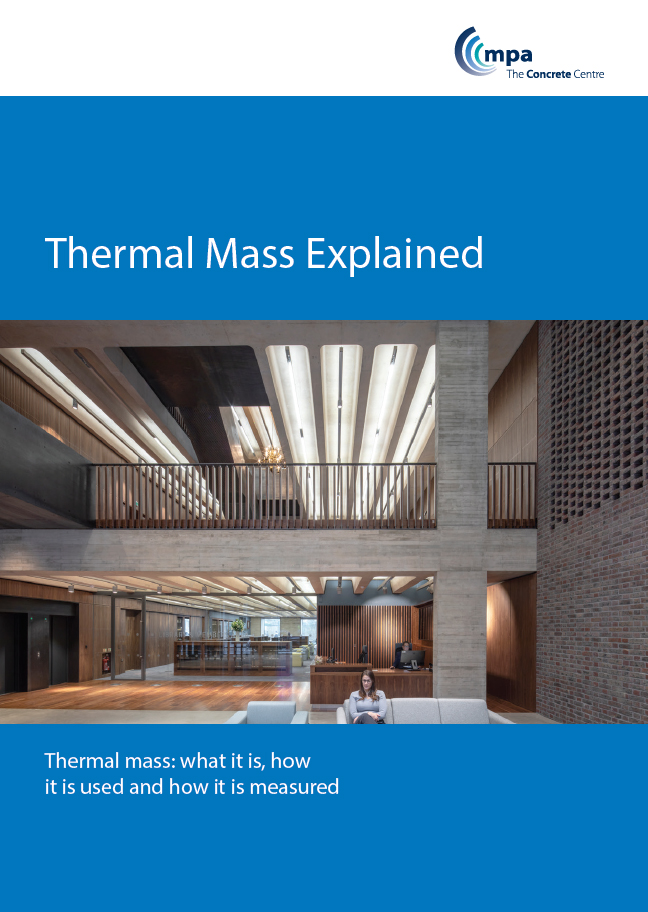Related links
Case Studies
London
Chester Balmore, a mix of 53 council rent, shared ownership and private homes, demonstrates that a building can be designed to meet the specific demands of a particular site and still achieve the Passivhaus criteria of super-insulation and high levels of airtightness.
London
White Collar Factory is a new 22,000m2 landmark office building just north of the City of London.
London
The headquarters for the Royal College of Pathologists is a flexible, environmentally efficient building.
London
This BREEAM 'Outstanding' flagship project reinforces UCL’s commitment to creating one of the most exciting universities in the world at which to study and work.
London
Hawkins\Brown acted as lead architect, while Architype acted as Passivhaus delivery architect for the first phase of the scheme, which provides 38 homes that are all socially rented to existing estate tenants, enabling the next phase of development to move ahead.
Exeter
Montgomery Primary School is the UK’s first zero carbon school built to the PassivHaus standard.
Gloucester
Underhill House, built beneath a 300-year old derelict barn in the heart of the English Cotswolds became the first certified Passivhaus in England.
Concrete Compass: Energy efficient buildings
Navigating to useful resources and guidance
Fabric first is a well-established approach for reducing energy use in buildings – but we can’t stop there. Reducing the energy consumption of buildings is an important part of whole-life carbon reduction, and is arguably the most impactful way for designers to improve the credentials of a new project, with savings that accumulate over the life of the building. But reducing the energy consumption of buildings has other, far-reaching potential social and economic benefits, such as tackling fuel poverty and fuel security, making it a natural priority for many clients - writes Elaine Toogood in Concrete Quarterly, spring 2020.
The full article 'In Search of New Lows' looks at airtightness, passive cooling, passive solar design, demand-side response and post-occupancy evaluation Download the CQ issue to read more.
Key guidance
The Concrete Centre has a wealth of guidance that can inform the design of low energy buildings:
- On-demand webinar: Energy-efficient design using concrete and masonry - this webinar gives ten tips for excellent year-round thermal performance.
- Thermal Mass Explained - whatever the building type, the use of thermal mass requires a basic working knowledge of its function and how best to use it. This short guide provides an introduction to thermal mass and its advantages.
- Concrete Floor Solutions for Passive and Active Floors - this guide details the various systems from the simple passive approach to the more sophisticated active systems and includes case studies for each. The guide focuses on issues including cooling capacity, system control, visual appearance and buildability/spans etc. and aims to assist designers select the best floor option to meet specific project needs.
- Design of building fabric to improve energy efficiency - visit this section of our website for information on how the entire building envelope of any building, its walls, roof, floor, and openings have a role to play in minimising heat loss through improved insulation, reduction or avoidance of thermal bridges and improved airtightness. Thermal mass also has a positive role to play but this can also be provided by internal structure such as wall and floors.
Focus on...
As featured in Concrete Quarterly magazine and other key magazines here are some interesting articles.
Read 'Keep it Tight' article in Concrete Quarterly 251: Focusing on how concrete techniques are helping to build Passivhaus developments, including Rick Mather’s 53-home Chester Balmore scheme in north London.
Read "Silent Star' article in The Concrete Centre magazine New Ideas that explains how concrete can contribute to low carbon, low energy design including acting as a thermal battery using smart thermal mass.
Spotlight on thermal mass
The thermal mass of concrete can be harnessed effectively to reduce the energy consumption of building in various ways. It can be optimised to suit the energy profile of the building in question.
A summary of different approaches include:
- Thermal mass for cooling – to avoid or reduce use of air- conditioning in buildings with large internal heat gains e.g offices, schools, libraries, data centres.
- Thermal mass for heating – to reduce energy use in the heating season by utilising stored internal heat gains.
- Thermal mass and passive solar design – optimising use of solar energy to reduce energy consumption of heating.
- Thermal mass for passive cooling in housing – reducing the risk of overheating and potential eneegy consumption for mechanical cooling.
- Thermal mass with active cooling and heating – using embedded pipes to optimise the thermal mass effect and/or speed up thermal response.
- Thermal mass with demand side response – utilising thermal mass to optimise peaks and troughs in energy grid supply.
Visit the extensive online guidance from The Concrete Centre on the use of thermal mass.
Spotlight on thermal performance in housing
Specifically for the design of housing, there are guidance documents that can be freely downloaded from The Concrete Centre publication library on:
 Back to Concrete Compass main page
Back to Concrete Compass main page
Thermal Mass Explained

YouTube library

Thermal mass in concrete and masonry can help us to tackle the challenges of a changing climate. We've been working with AKT II, Arup and Bennetts Associates to bring this essential technical concept to life. The result is pretty cool.
On-demand webinar
A roundup of the top ten design considerations that will collectively deliver excellent year-round thermal performance in concrete and masonry buildings.